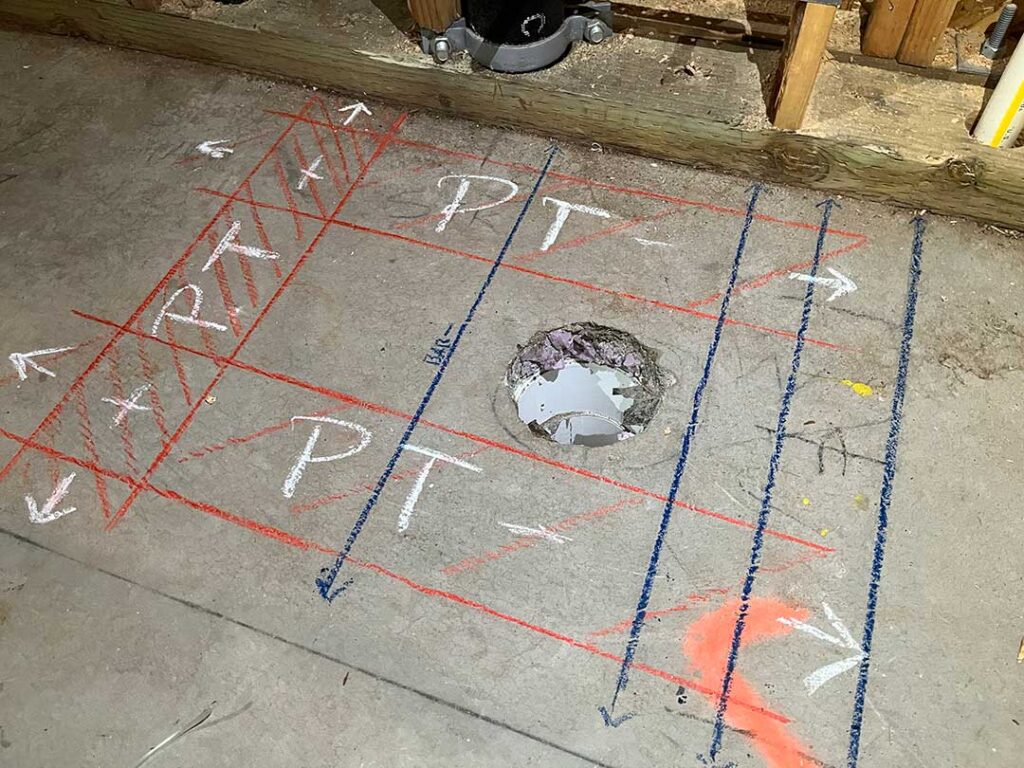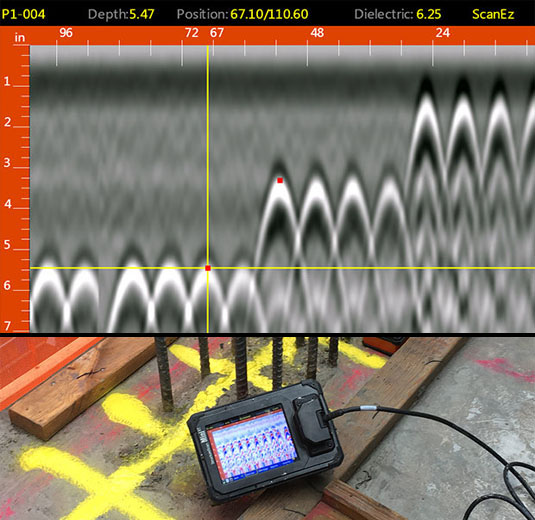Unlock the Trick Conveniences of Concrete Scanning for Streamlined Procedures and Expense Financial Savings
In the world of building and construction and facilities advancement, the use of concrete scanning technology has actually transformed job management methods. The real value lies in the nuanced methods in which concrete scanning can transform the landscape of building tasks, leading to streamlined procedures and considerable price financial savings.
Improved Project Preparation and Implementation
Enhanced task preparation and execution are important parts in the effective application of concrete scanning modern technology within building and construction jobs. By incorporating concrete scanning into the initial task intending stage, building groups can accurately determine the area of rebar, post-tension cords, and various other embedded items within concrete structures. This information enables even more precise task organizing, decreasing the danger of expensive mistakes or delays throughout the building and construction procedure.
In addition, with concrete scanning technology, job supervisors can develop thorough 3D models of the subsurface conditions prior to any kind of drilling or cutting occurs. This degree of understanding makes it possible for professionals to make informed decisions and modifications to their construction plans, resulting in improved task effectiveness and general top quality.
Basically, the assimilation of concrete scanning improves task preparation by providing crucial data that boosts decision-making processes, lessens rework, and makes certain that building and construction jobs are finished on time and within spending plan. By leveraging this sophisticated technology, construction groups can simplify procedures, mitigate dangers, and deliver successful end results for their clients.

Boosted Precision in Item Discovery
By integrating concrete scanning modern technology into building projects, the emphasis moves towards accomplishing increased accuracy in item discovery, particularly in identifying rebar, post-tension cords, and various other ingrained objects within concrete frameworks. This heightened precision in object detection is crucial for making certain the architectural integrity and safety and security of structures and facilities. Properly identifying the location and depth of support products like rebar and post-tension wires assists protect against prospective damage throughout exploration, cutting, or improvement activities. In addition, by specifically identifying embedded things, construction teams can avoid expensive errors, revamp, and project hold-ups.
Concrete scanning innovation makes it possible for building specialists to visualize the inner make-up of concrete frameworks in real-time, offering detailed insights right into the presence and positioning of objects within the concrete. This level of precision not just improves project planning and implementation but additionally reduces the threat of mishaps and structural failures. With boosted things discovery capabilities, construction groups can work extra efficiently, minimize product waste, and ultimately deliver high-quality jobs within budget plan and schedule restraints.
Improved Security and Threat Mitigation

Additionally, concrete scanning aids in making sure the structural security of buildings and infrastructure by detecting gaps, delamination, or various other issues that might compromise the safety of the job. By attending to these problems early on, building and construction teams can take the necessary restorative actions to reinforce the concrete and avoid future problems. Eventually, the enhanced security and risk mitigation given by concrete scanning modern technology not only guard the health of employees and the general public however likewise add to the total success and longevity of construction projects.
Time Efficiency and Expense Savings
Implementing concrete scanning innovation in building and construction projects can cause substantial time efficiency and expense financial savings. By using advanced scanning devices such as ground-penetrating radar (GPR) and electromagnetic induction, building groups can accurately find rebar, post-tension cable televisions, and other subsurface elements without the need for destructive techniques. This specific info permits structured project preparation and implementation, minimizing the moment invested on unexpected hold-ups because of striking unknown items during excavation or drilling.
Additionally, the capability to determine possible see this dangers below the surface beforehand can prevent expensive problems to devices and injuries to employees, further adding to general price financial savings. Additionally, the performance obtained from utilizing concrete scanning innovation converts right into faster task completion times, enabling construction companies to handle more tasks and boost their earnings.
Decreased Interruptions and Downtime
The use of concrete scanning innovation not only boosts time efficiency and cost savings in building and construction tasks but likewise plays a vital role in minimizing disruptions and downtime. By employing sophisticated scanning techniques such as Our site Ground Permeating Radar (GPR) or Concrete X-ray, building and construction teams can precisely find rebar, post-tension wires, conduits, and other subsurface structures within concrete structures without the need for destructive investigative approaches (RainierGPR Concrete Scanning). This precision in situating vital parts aids stop unexpected problems during drilling, cutting, or coring activities, thus significantly reducing the threat of unexpected downtime because of repair work or remodel
Moreover, concrete scanning allows project managers to plan building activities more effectively by determining potential obstacles ahead of time. Eventually, the decreased disturbances and downtime facilitated by concrete scanning technology lead to enhanced job timelines, increased productivity, and overall expense financial savings for construction jobs.
Conclusion
To conclude, concrete scanning uses various benefits for structured operations and price financial savings in various markets - RainierGPR Concrete Scanning. By enhancing job preparation and implementation, increasing accuracy in object detection, enhancing security and threat reduction, saving time and expenses, and decreasing disruptions and downtime, organizations can enhance their procedures and achieve greater performance. Generally, including concrete scanning into operations can cause boosted outcomes and a more effective workplace
By incorporating concrete scanning into the preliminary job preparing phase, building teams can accurately recognize the location of rebar, post-tension cables, and visit our website other embedded items within concrete frameworks.By integrating concrete scanning innovation into construction tasks, the emphasis moves towards achieving boosted accuracy in object detection, especially in recognizing rebar, post-tension cords, and various other ingrained things within concrete structures.Concrete scanning innovation allows building experts to imagine the internal structure of concrete frameworks in real-time, offering detailed insights into the presence and positioning of objects within the concrete. By employing advanced scanning methods such as Ground Permeating Radar (GPR) or Concrete X-ray, building teams can properly situate rebar, post-tension wires, channels, and other subsurface structures within concrete structures without the demand for destructive investigative methods. Ultimately, the lessened interruptions and downtime facilitated by concrete scanning technology lead to boosted job timelines, increased efficiency, and total cost savings for construction projects.